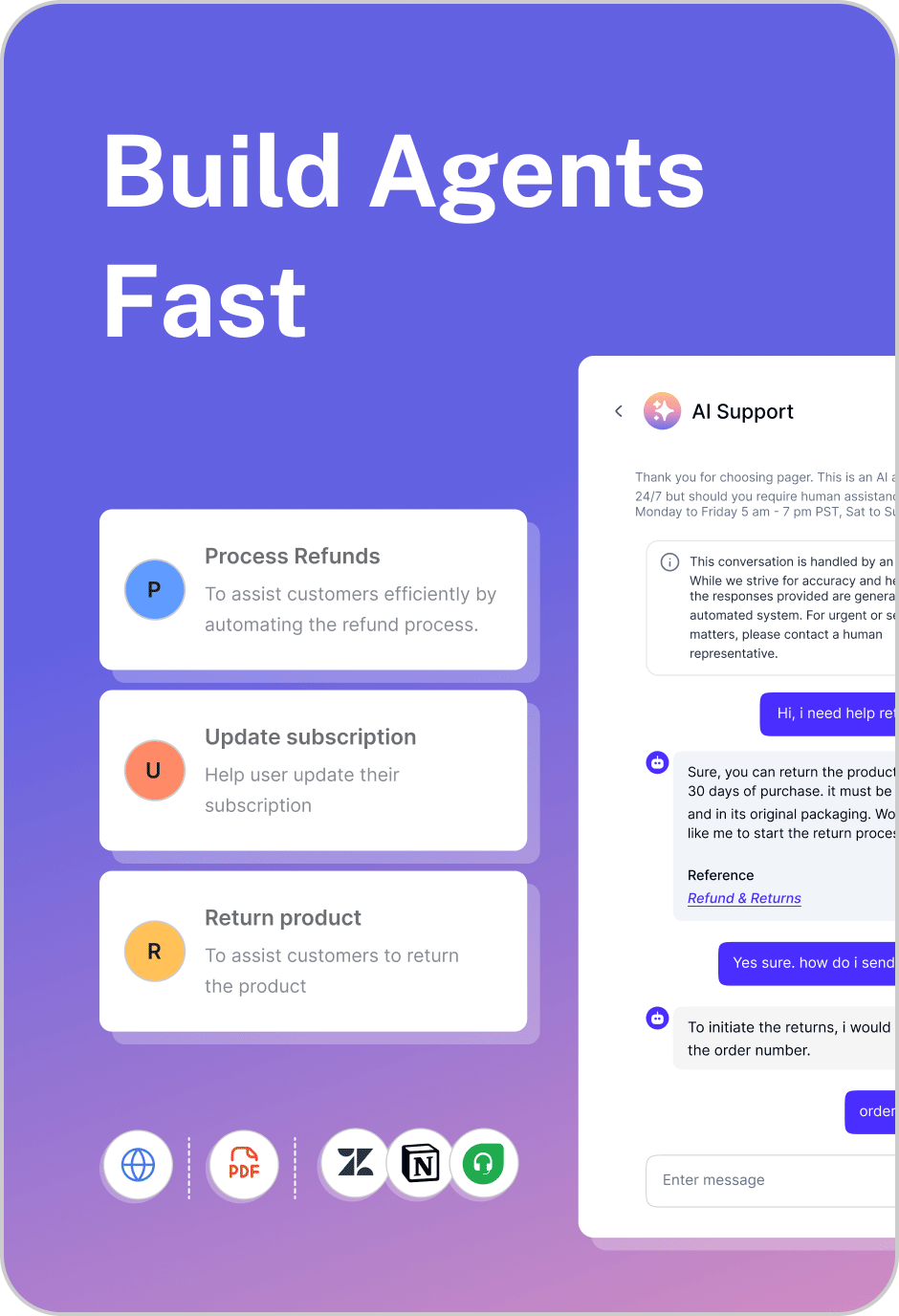Global businesses today don’t just serve one market—they serve many. And with every new market comes a new language, a new set of cultural nuances, and an entirely different expectation of support quality. Customers demand assistance in their own language, and failure to deliver that can cost you loyalty, revenue, and reputation.
This article explores how AI agents revolutionize multilingual support. We'll look at real-world use cases, the challenges of traditional language support, how multilingual AI agents help you scale, and how pagergpt enables startups, SMBs, and enterprises to provide seamless, human-like support in 95+ languages.
What is a Multilingual Support Agent?
A multilingual support agent is an AI-powered virtual assistant capable of understanding and responding in multiple languages. It doesn’t just translate; it localizes, detects user intent, and ensures cultural relevance in communication, whether via website chat, WhatsApp, Slack, or email.
These agents can be built using platforms like custom gpt and deployed across customer-facing touchpoints with minimal engineering effort.
Challenges with Traditional Multilingual Support Management
Despite best efforts, traditional multilingual support setups often fall short. Here's why:
High Hiring Costs: Maintaining human agents across multiple languages is expensive. Recruiting, training, and retaining them adds recurring costs.
Inconsistent Quality: Human agents may be fluent but not native, leading to unclear communication or misinterpretation of cultural nuances.
Delayed Responses: Non-peak hours or low-staffed language queues can lead to increased wait times.
Scalability Issues: As your business expands, scaling language coverage becomes operationally complex.
Limited Coverage: Not every language can be supported 24/7 by human teams—especially for smaller, emerging markets.
Fragmented Customer Experience: Switching between different agents and support tools for each region leads to poor handoffs and fragmented service.
Manual Translation Tools Fail: Relying on basic translation tools like Google Translate often leads to context loss, damaging the customer experience.
Get Started with pagergpt
If multilingual support is on your roadmap or if it’s already a challenge pagergpt makes it effortless. From setup to deployment, everything is no-code and fast. Deploy once, and scale language coverage instantly across platforms.
👉 Book a demo to see how pagergpt powers global conversations with AI.




